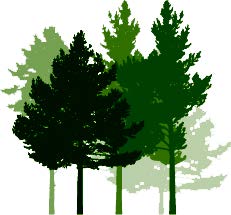Search technical reports
Naturally durable wood - is it a practical alternative to preservative-treated pine?
By NZ Forest Research Institute, What's New in Forest Research No. 245, September 1997.
Download whats_new_in_forest_research_no_245 (pdf)
Executive summary
With increasing awareness of potential adverse effects of toxic chemicals on the environment, growing and using naturally durable timbers is an attractive alternative to the use of preservative- treated timber. The New Zealand Building Code allows a 15-year life for constructional timbers not used in critical situations - a life well within the scope of many species capable of being grown in New Zealand.
But which species and for what uses?
Resistance to fungal and insect attack is only one property which can affect fitness for purpose. Stability, machining or working properties, and re- sistance to weathering must all be taken into ac- count, and these attributes vary enormously from species to species. For example, Eucalyptus cladocalyx has been found to be very durable in ground contact, but its extreme density makes driving staples into it almost impossible and hence its suitability for fence posts is questionable.
Tests have been undertaken at FRI on various untreated species to determine their suitability for such uses as fence posts, fence battens, decking, weatherboards and roofing shingles. However, al- though a particular species may perform well in these tests, there may be silvicultural factors, such as susceptibility of the growing tree to fungal dis- eases or insect attack, poor site and establishment, which could well restrict widespread planting and subsequent utilisation.

 Specialty Timbers New Zealand
Specialty Timbers New Zealand
No posts yet
Add a post